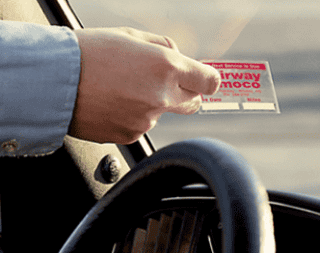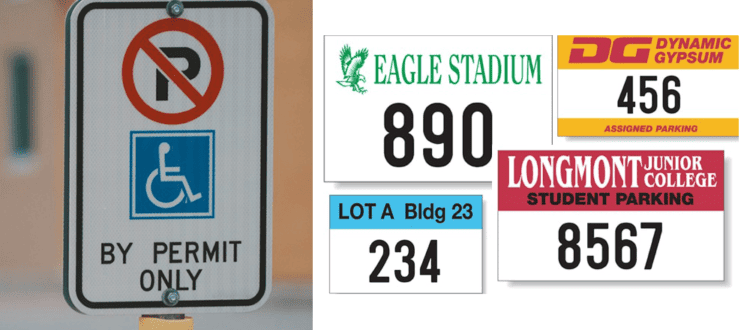Static cling parking permits are a convenient and practical solution for managing parking in various locations such as schools, businesses, residential areas, and event parking. Unlike traditional stickers or hangtags, these permits are made of a durable static cling material that adheres to the inside of car windows without leaving any residue when removed.
This makes them easy to apply, eliminating the need for adhesive or special holders. With their vibrant and customizable designs, static cling parking permits serve as a highly visible means of identifying authorized vehicles, ensuring efficient parking management and enforcement.
What Material are Static Cling Parking Permits Made of?
Static cling parking permits are made of a unique and versatile material known as static cling vinyl. This material is a thin, flexible vinyl film that is adhesive-free and sticks to smooth surfaces through the use of static electricity. It does not rely on any chemical or adhesive for adhesion, which means it can be easily applied and removed without leaving any residue or causing any damage to the surface. The static cling material is also durable and long-lasting, with the ability to withstand outdoor elements such as sunlight, rain, and temperature changes. This ensures that the parking permits remain intact and visible for an extended period, serving their purpose effectively.
Benefits of Static Cling Parking Permits

- Easy application
- No adhesive or special holders required
- Leaves no residue when removed
- Highly visible and customizable designs
- Efficient parking management and enforcement
- Durable and long-lasting material
- Suitable for various locations such as season’s passes, schools, businesses, residential areas, and event parking
How Do Parking Permit Static Clings Differ from Hang Tags and Stickers?
Parking permit static clings offer several advantages over traditional hang tags and stickers. Unlike hang tags, which require attaching to a rearview mirror, static clings adhere directly to the inside of car windows using static electricity. Also, static clings leave no residue when removed, ensuring that car windows remain clean and unharmed. In contrast, stickers require adhesive and may leave sticky residue behind or be difficult to remove. Overall, parking permit static clings provide a convenient, clean, and efficient solution for identifying authorized vehicles and managing parking facilities.
Which Side of the Windshield to Put Static Cling Parking Permits?
 They should always be placed on the inside of the windshield, usually on the driver’s side. This placement ensures easy visibility and accessibility for parking enforcement personnel, as well as other authorized individuals.
They should always be placed on the inside of the windshield, usually on the driver’s side. This placement ensures easy visibility and accessibility for parking enforcement personnel, as well as other authorized individuals.
It is essential to ensure that the permit is securely affixed to the inside of the windshield, preferably in the bottom corner or any other location that does not impede the driver’s line of sight. By adhering the static cling parking permit on the correct side of the windshield, it enables easy identification and verification for parking management purposes.
Standard Sizes for Static Cling Parking Permits
They come in a variety of standard sizes to accommodate different needs and preferences. The most common sizes for static cling parking permits are typically rectangular, ranging from approximately 2 inches by 2 inches to 3 inches by 3 inches. These dimensions are ideal for displaying important information such as the permit number, expiration date, and any additional graphics or logos. However, it’s important to note that the sizes may vary depending on the specific requirements and regulations set by each parking authority or organization. Custom sizes are also available to cater to specific needs.
How to Install a Static Cling Parking Permit on Your Windshield?
Installing one on your windshield is a simple process. Here are the steps to follow:

- Start by cleaning the inside of your windshield using a glass cleaner to ensure there is no dirt, dust, or oily residue.
- Take the static cling parking permit and peel off the protective backing to expose the cling side – that side is the cling side and goes against the window.
- Position the permit on the inside of the windshield, preferably on the driver’s side, ensuring it does not obstruct the driver’s line of sight.
- Gently press the permit against the windshield, starting from one side and moving towards the other, to adhere the static cling to the glass surface.
- Smooth out any air bubbles or wrinkles by gently pressing on the permit with your hand or a soft cloth, working from the center towards the edges.
- Double-check that the permit is securely attached and there are no visible air bubbles or creases.
- Stand outside the vehicle and check from various angles to ensure the permit is clearly visible and easily readable.
- If necessary, adjust the position of the permit for optimal visibility and adherence.
- Once satisfied with the placement, take a final close look to ensure the permit is securely and neatly installed.
- Remember to follow any specific instructions or regulations provided by the parking authority or organization regarding the placement of the permit on your windshield.
Following these simple steps will ensure that your parking permit is properly installed and clearly visible for parking enforcement and identification purposes.
How Long Do Static Cling Parking Permits Last?
They are designed to be durable and long-lasting. However, on average, most permits are installed for the year, so only need to last a year.
Conclusion
Static cling parking permits offer a convenient and reliable solution for efficiently managing parking facilities. With their easy installation process and ability to adhere to the inside of windshields without leaving residue, they provide a hassle-free experience for users. By adhering them on the correct side of the windshield, it ensures easy visibility and accessibility for parking enforcement personnel and authorized individuals. Overall, they are a practical and reliable solution that simplifies parking management while maintaining compliance with regulations.
Popular Posts:




